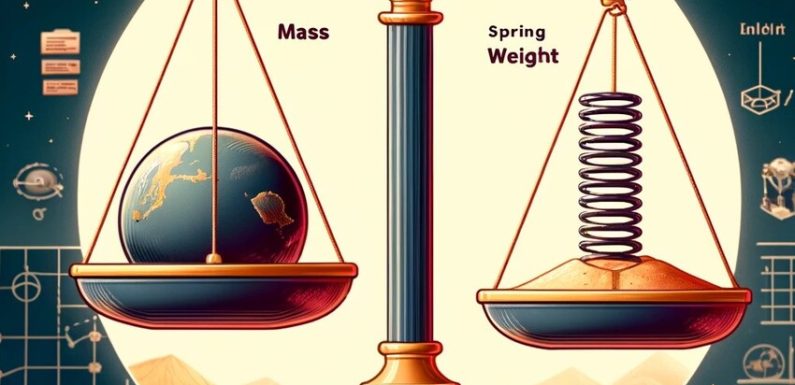
Understanding the distinction between mass and weight is crucial for students studying physics or any related scientific field. This guide aims to clarify these concepts, providing a clear explanation that demystifies how mass and weight are different yet interconnected aspects of physics. By the end of this article, students should have a solid grasp of both terms and know how to apply this knowledge in practical scenarios.
Introduction to Mass and Weight
Mass and weight are fundamental concepts in physics, but they are often confused by students. Mass is a measure of the amount of matter in an object, typically measured in kilograms or grams. It is a scalar quantity, which means it has magnitude but no direction. Weight, on the other hand, is the force exerted by gravity on an object’s mass. Unlike mass, weight is a vector quantity, which means it has both magnitude and direction.
The Concept of Mass
Mass is an intrinsic property of an object and does not change regardless of its location. Whether an object is on Earth, the Moon, or in outer space, its mass remains constant. This is because mass reflects the amount of matter an object contains, which does not change unless matter is physically added or removed.
In the classroom, mass can be measured using a balance scale, which compares the mass of an object directly with known masses. This method is effective because it is independent of gravity, making it universally applicable.
Understanding Weight
Weight, however, varies depending on the gravitational pull exerted on an object. The standard unit of weight in the scientific community is the Newton. On Earth, gravity accelerates objects at approximately 9.8 meters per second squared. To calculate the weight of an object, you multiply its mass by the gravitational force (W = mg, where W is weight, m is mass, and g is the acceleration due to gravity).
This variability of weight based on location is a key concept students must grasp. For instance, an object will weigh less on the Moon than on Earth because the Moon’s gravitational pull is weaker.
Differentiating Mass and Weight in Practical Terms
To illustrate the difference between mass and weight to students, consider using practical examples and experiments. One effective demonstration is using a spring scale versus a balance scale. A spring scale measures weight, showing different readings on Earth and the Moon. A balance scale measures mass, showing the same reading regardless of where it is used because it compares an object’s mass to standard masses.
The Significance of Understanding These Concepts
Grasping the difference between mass and weight is not just academically important; it has practical implications in various fields such as engineering, astronomy, and even everyday life. For instance, engineers need to consider both mass and weight when designing vehicles that will operate both on Earth and in space. Astronomers must account for these differences when calculating the motion of planets and their satellites.
Common Misconceptions to Avoid
Students often believe that mass and weight are interchangeable because their everyday use outside scientific contexts does not require precise definitions. However, in scientific terms, they are distinct concepts. A common misconception is that objects are weightless in space. In reality, they are in a state of free fall, experiencing microgravity, which gives the appearance of weightlessness, but their mass remains unchanged.
Conclusion
Differentiating mass and weight is foundational for students of physics and essential for anyone involved in scientific and engineering disciplines. By understanding that mass is a measure of matter content and weight is the measure of gravitational force on that matter, students can better comprehend and apply these concepts in both theoretical and practical scenarios.
Incorporating hands-on experiments, such as using different types of scales and observing their behavior in varied gravitational environments, can enhance understanding and retention of the difference between mass and weight. Armed with this knowledge, students will be better prepared to tackle more complex problems in their future scientific endeavors.
Tech World Times (TWT), a global collective focusing on the latest tech news and trends in blockchain, Fintech, Development & Testing, AI and Startups. If you are looking for the guest post then contact at techworldtimes@gmail.com

